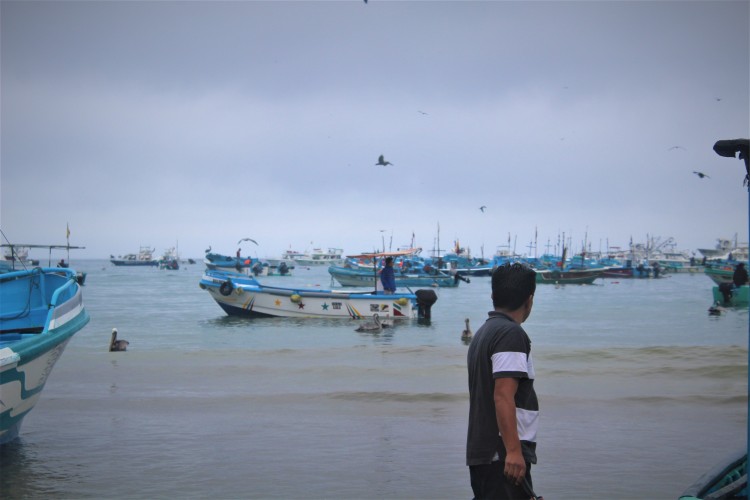Insight
17 August 2020
Species Shifts In Response To Climate Change

When we consider anthropogenic impacts on commercial fishery stocks, we often think of overfishing and seldom more. However, the most recent Intergovernmental Panel on Climate Change (IPCC) Report (2019) estimates that anthropogenic global warming stands at 0.1-0.3°C per decade (likely range, IPCC 2019), and with that comes other significant shifts in the seas, including an increase in sea level rise, calculated at 3.1-4.1 mm yr-1 (very likely range). Along with associated stressors, such as ocean acidification and increased frequency and strength of marine heatwaves, these changes will damage sensitive marine ecosystems around the world. Specifically, “habitat area and biodiversity, as well as ecosystem functioning and services”, are already being impacted (high confidence, IPCC 2018). Any one of these factors could be enough to cause spatial and/or temporal shifts in the fishery's target species, and combined, these factors could lead to more significant shifts than previously thought.
Several programs are working hard to develop predictive models for short and long-term species shifts while recognising that sea surface temperature (SST) is not necessarily the only driving factor for every scenario; McHenry et al. suggest that focusing on SST as a driving parameter may mask some species’ sensitivity to other aspects of climate change (2019). Although incorporating more relevant parameters into these analyses will help to inform our knowledge of future species shifts, the fact remains the same the general trends will be migrations poleward and/or into deeper waters (Poloczanska et al. 2016). While this applies to organisms ranging from seaweeds and mangroves to sharks and whales, it may be particularly detrimental to established commercial fisheries. Fishes and decapods (such as crabs, lobsters, and shrimp) are quite mobile, and spatial shifts for these targets may be vast, but even relatively sessile organisms such as scallops release their larvae into the water, where their settlement preferences may shift towards poleward areas in which they are more likely to adapt and survive.
Considerations For Maritime Infrastructure Developers
While this may seem like a problem destined for the fishers’ realm, it should also fall under consideration for developers of maritime infrastructure. So much time and energy go into planning how best to mitigate potential fisheries disruptions or conflicts on a given project, but the data used to inform this strategy typically come from the (very recent) past. With technological advancements yielding higher-quality materials and more efficient maintenance operations, the lifespan of new subsea infrastructure installations is growing. With this, so should our considerations of how diverse maritime users can continue to share our marine resources safely and effectively. We keep hearing so many stark and disheartening figures based on what we can expect by the year 2050. For example, a global sea level rise of 0.2 - 0.3m will displace 300 million people all in the next three decades (Kulp & Strauss, 2019). To supply a projected global population of 9 billion people with 20% of their dietary protein requirements by 2050, fisheries and aquaculture would need to increase their yield by 50% above 2006 levels (Béné et al. 2015). It must be considered that most projects being installed now may still be operational by then. Just as many species are doing, we must also learn to adapt in how we respond to climate-driven shifts. Smart and effective adaptive management strategies are the best method of ensuring that new and ongoing projects will be able to roll with the punches of shifting seas.
Photo by Tiffany Jeong (2018)
For more information, please see the following sources.
Béné, C., Barange, M., Subasinghe, R. et al. Feeding 9 billion by 2050 – Putting fish back on the menu. Food Sec. 7, 261–274 (2015).
IPCC, 2018: Summary for Policymakers. In: Global Warming of 1.5°C. An IPCC Special Report on the impacts of global warming of 1.5°C above pre-industrial levels and related global greenhouse gas emission pathways, in the context of strengthening the global response to the threat of climate change, sustainable development, and efforts to eradicate poverty [Masson-Delmotte, V., P. Zhai, H.-O. Pörtner, D. Roberts, J. Skea, P.R. Shukla, A. Pirani, W. Moufouma-Okia, C. Péan, R. Pidcock, S. Connors, J.B.R. Matthews, Y. Chen, X. Zhou, M.I. Gomis, E. Lonnoy, T. Maycock, M. Tignor, and T. Waterfield (eds.)]. In Press.
IPCC, 2019: Summary for Policymakers. In: IPCC Special Report on the Ocean and Cryosphere in a Changing Climate [H.-O. Pörtner, D.C. Roberts, V. Masson-Delmotte, P. Zhai, M. Tignor, E. Poloczanska, K. Mintenbeck, A. Alegría, M. Nicolai, A. Okem, J. Petzold, B. Rama, N.M. Weyer (eds.)]. In press.
Kulp, S.A. & Strauss, B.H. (2019). New elevation data triple estimates of global vulnerability to sea-level rise and coastal flooding. Nature Communications, 10(1), pp. 4844.
McHenry, J., Welch, H., Lester, S.E., and Saba, V. (2019). Projecting marine species range shifts from only temperature can mask climate vulnerability. Global Change Biology, 25(12), pp.4208–4221.
Poloczanska, E.S., Burrows, M.T., Brown, C.J., Molinos, J.G., Halpern, B.S., Hoegh-Guldberg, O., Kappel, C.V., Moore, P.J., Richardson, A.J., Schoeman, D.S., and Sydeman, W.J. (2016). Responses of Marine Organisms to Climate Change across Oceans. Frontiers in Marine Science, 3.
